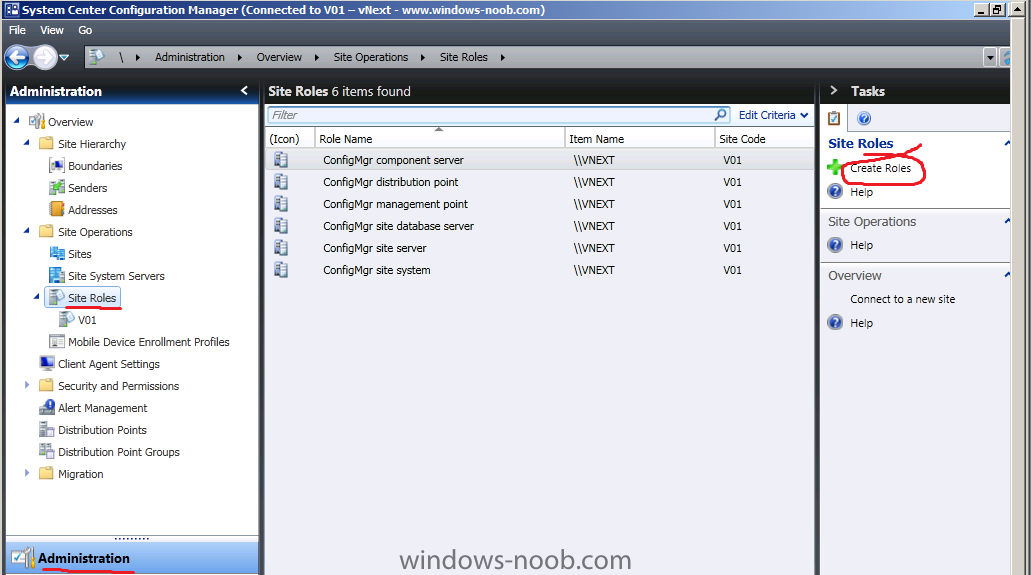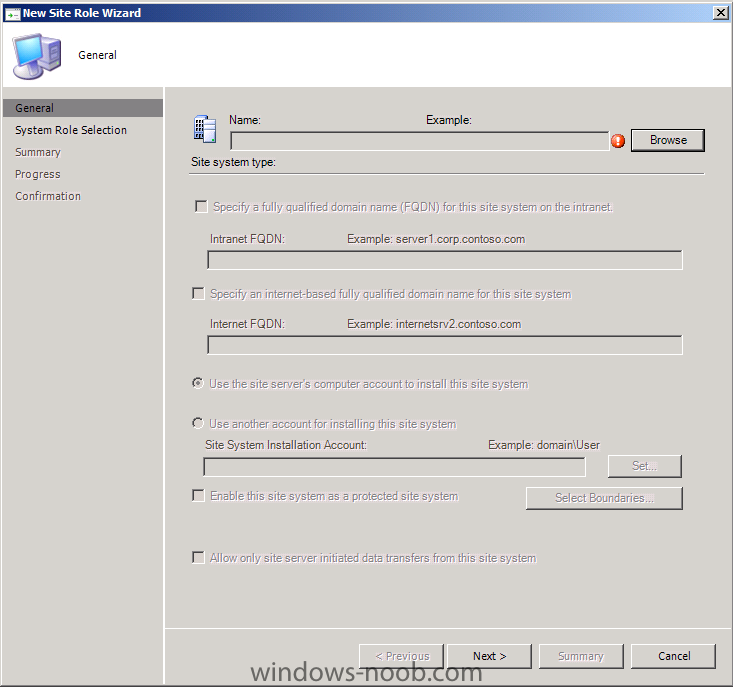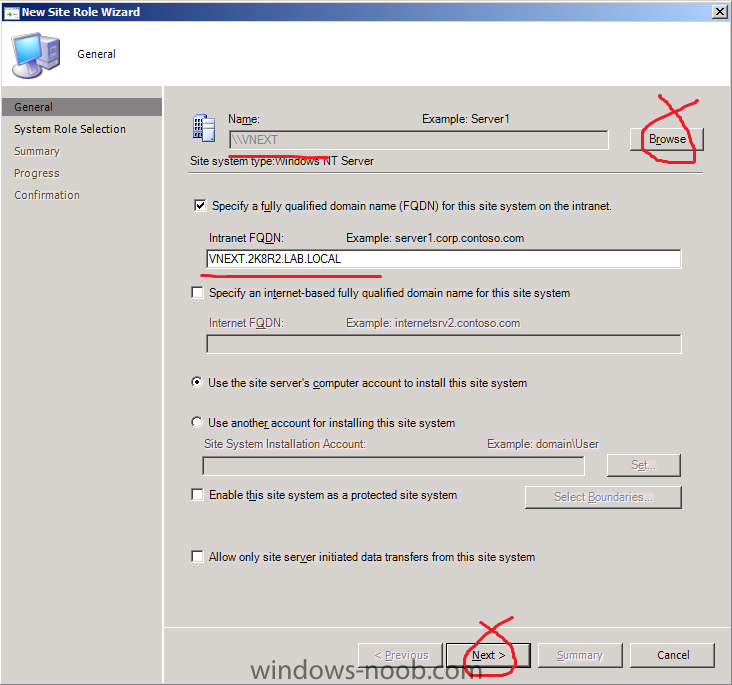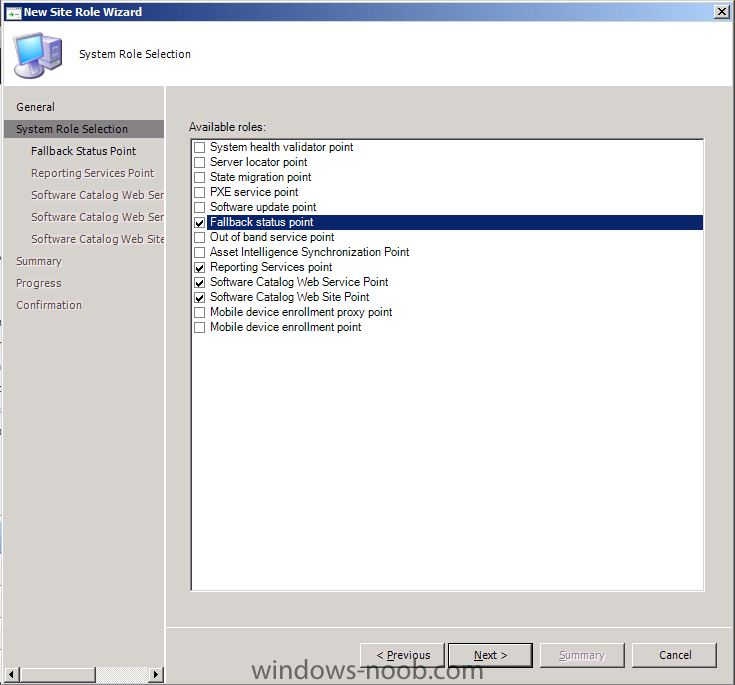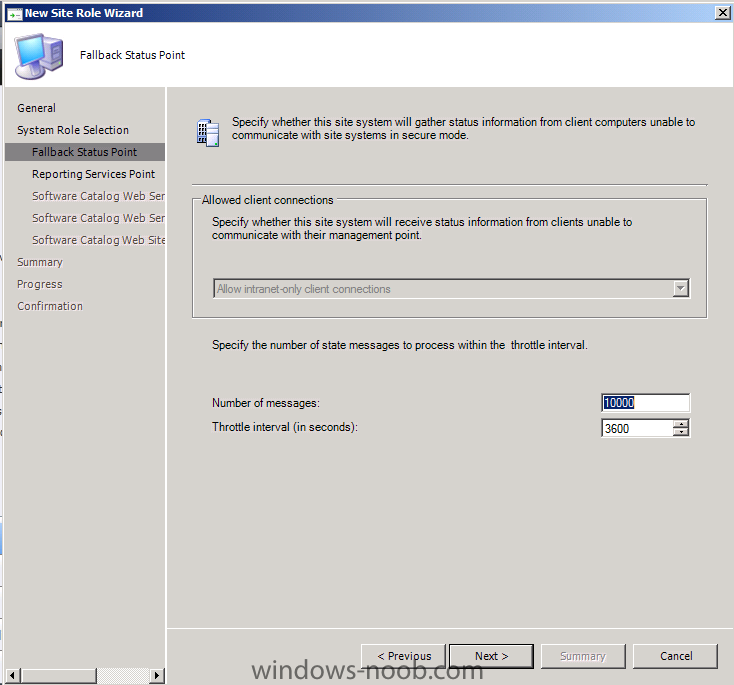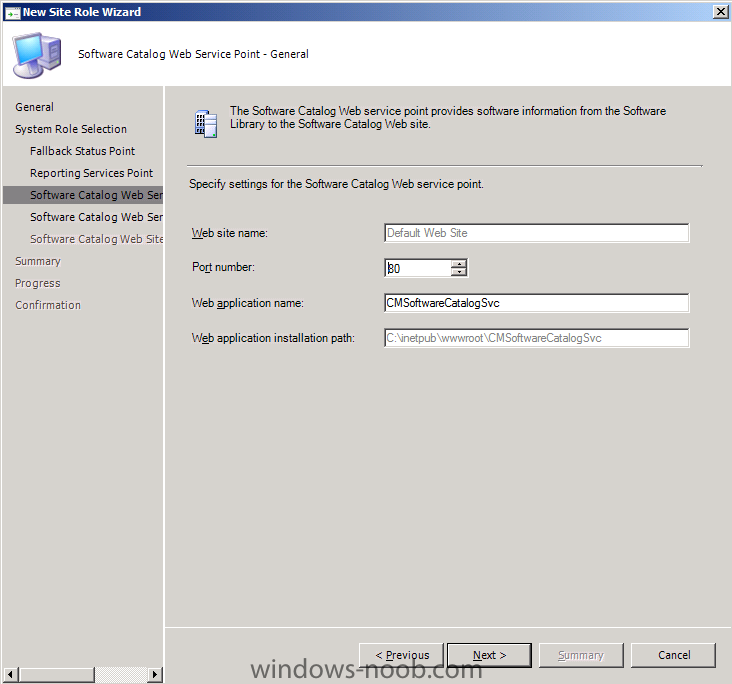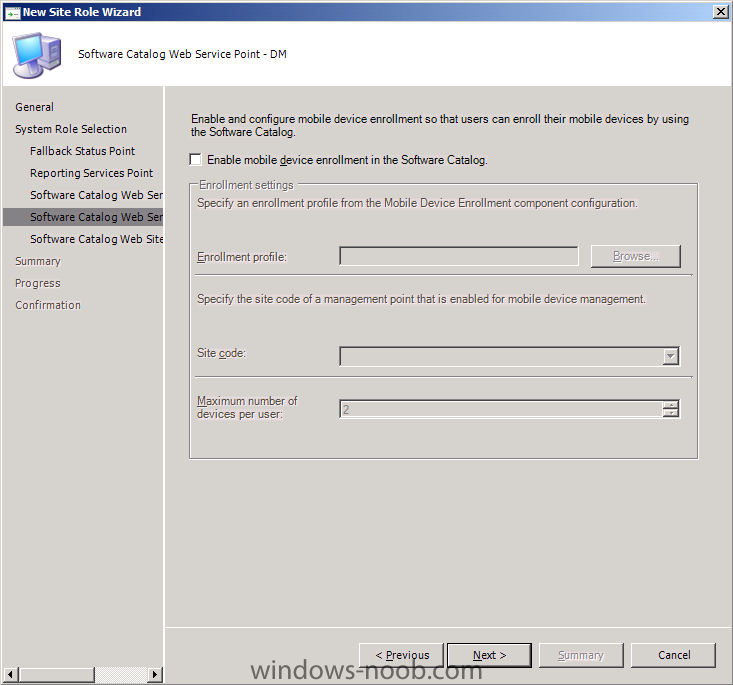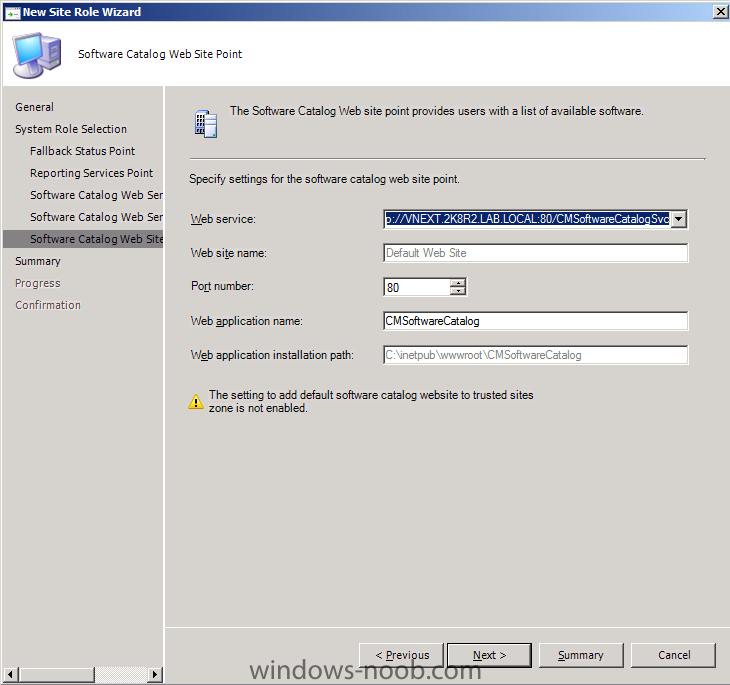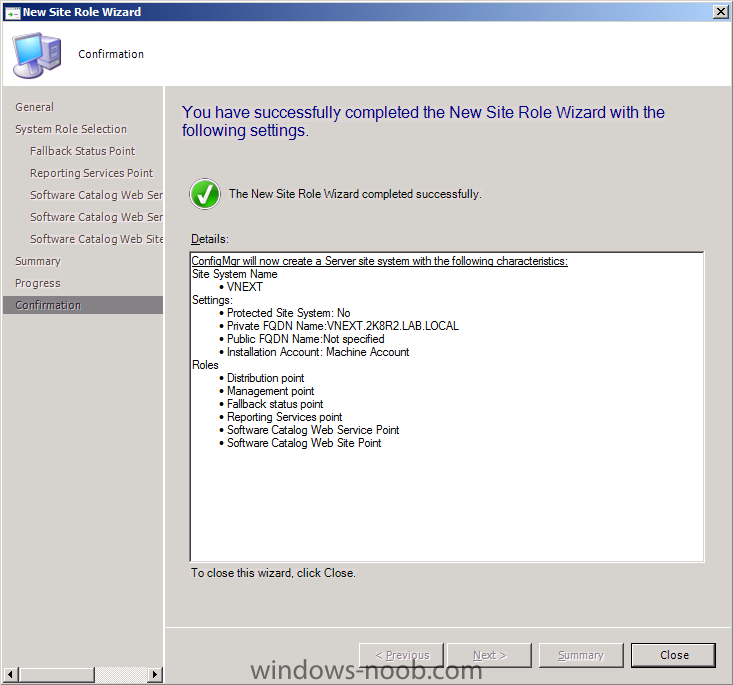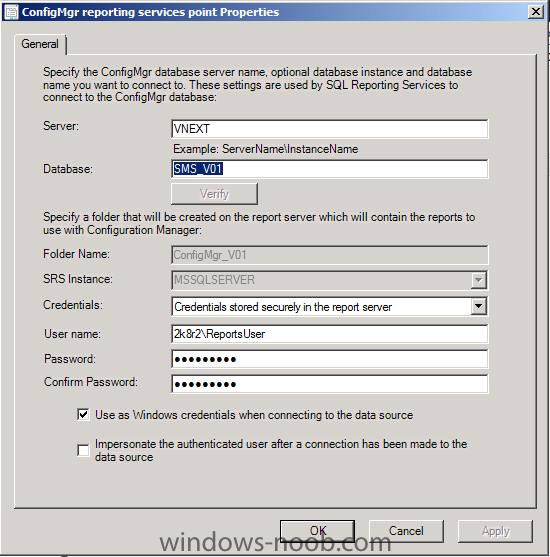-
Posts
9249 -
Joined
-
Last visited
-
Days Won
369
Everything posted by anyweb
-
enable f8 support in your boot image, press f8 and find it here
-

Configuring Software Update Point within SCCM
anyweb replied to anyweb's question in Software Update Point
what error do you get ? is that a standard Install Software Updates step or one you created yourself ? -
we\d need to see the smsts.log file to find out why it failed
-

Issue Deploying Windows 7 Using SCCM 2007 SP2
anyweb replied to Vinay Kumar C's question in Deploy 7
do you get an ip in WinPE ? post your smsts.log file here pls -
then do a build and capture of XPsp3 with those apps included (here's office 2007) in the build and capture task sequence, once the image is captured you can deploy it as many times as you want with another task sequence.
-

Issue Deploying Windows 7 Using SCCM 2007 SP2
anyweb replied to Vinay Kumar C's question in Deploy 7
agreed, enable f8 support and do ipconfig while in win pe, do you see an ip address ? if not add nic drivers to boot wim, for sccm 2007 sp2 they should be windows 7 network drivers -
i have an old latitude C610 which certaintly failed to boot via winpe3, however i manually installed win7 on it and once installed noted that it had loaded a nic driver for the old hardware, i copied that driver and imported it into win PE and lo-and-behold could image that system just a thought
-
also you can advertise the task sequence to an Operating system that you are NOT USING in your organisation, eg: vista then your normal clients (windows xp and 7) will not see it in RAP (run advertised programs) but can still use it via PXE,
-
what error do you get when it tries to restore, check loadstate.log
-
make sure the clients are all sp2 level, that is required for windows 7 and windows 2008 r2
-
are all the clients at the same level patch wise (windows updates) and are they using the same version of ConfigMgr Client ?
-

configure software catalog web service point
anyweb replied to jigzs's topic in Configuration Manager 2012
i'm putting something together, coming shortly, what errors are you seeing -

How to use software update point, during OS deployment
anyweb replied to jeaostro's question in Software Update Point
where do you have the install software updates step ? is the computer in the domain ? -
first of all what version of sccm are you running ? secondly the only drivers you should add to your boot.wim files are Network drivers (sometimes storage too, but rarely) and the network drivers are based on the version of SCCM and not on the os you are deploying eg: if you are running SCCM 2007 sp1, use Windows vista based network drivers if you are running SCCM 2007 sp2, use Windows 7 based network drivers the drivers used by the os you are deploying (windows 7 or windows xp or whatever) are applied during the Apply Driver Package stage of the Task Sequence, your failure, baseed on the logs provided seems to be here <![LOG[Failed to locate the local data path. The files needed to resume the task sequence are missing. This could be because the task sequence finished while in Windows PE. Please check the largest available partition for SMSTSLog\smsts.log file for more information. The system cannot find the file specified. (Error: 80070002; Source: Windows)]LOG]!><time="11:17:02.912+240" date="08-30-2010" component="TSManager" context="" type="3" thread="7444" file="tsmanager.cpp:1106"> <![LOG[Task Sequence Manager could not initialize Task Sequence Environment. code 80070002] so can you tell me a bit about how you set up your task sequence, how are you executing it etc.. cheers niall
-
it will probably fail (feel free to verify please and report back) as the back end WSF file (CUSTOM_AppInstall.wsf) isn't expecting that input, you'll have to talk to your scripter(s) and ask them to rewrite the back end script to take account of multiple dc's and once you have it working, post it here cheers niall
-
hi there, in your ccm/logs folder do you see any other SMSTS*.log file ? if so does it list the actual failure as i don't see one mentioned in your log
-
first of all how did you set the software metering rule and did you wait until the clients reported back ?
-
We already know quite a few details about Internet Explorer 9, Microsoft's upcoming attempt to retain - or grow - its market share in the browser world. Standards and speed are the main focus of IE9, and if a video of the upcoming beta release is anything to go by, they're doing pretty well. Just... Did they just manage to make the interface even less appealing? Microsoft has fed us a number of builds for Internet Explorer 9, and while theyshowed off the speed improvements as well as the much more modern standards support (95 on Acid3), Microsoft remained tight-lipped on what, exactly, it was planning to do about that abomination they dare to call a "UI" used by the previous two Internet Explorer releases. With the beta release only a few days away, leaks are bound to occur. A website called IEBest.com (I wish I was making this stuff up) claims to be in possession of the beta release, and has the video material to prove it. Of course, it's hard to assess how genuine this stuff is, but if it is, the IE9 user interface team deserves a spanking. Assuming this is real, the interface doesn't look particularly polished; the tabs feel bolted on, as if they're not part of the actual program. If it were a screenshot, I'd call Photoshop on that one. Everything does look a lot tidier than previous releases, but one massive problem stands out like a major cringe-inducing eye-sore. While I'm this close to proposing to Chrome's UI so I can give her babies, Chrome does have one major problem: lack of tab overflow. If you open boatloads of windows in Chrome, the tabs become ever smaller and less readable, until you're finally just staring at a white mountain range. However, at least Chrome will give you the full width of the window to play with. In this supposed IE9 user interface, you're given just half of the window for the tab bar, because the stupid address bar is in the way! This monumental oversight alone makes me think we're looking at a fake. This just can't be real. If it turns out this is, in fact, real, I'm going to do a massive facepalm. via > http://www.osnews.com/story/23771/Internet_Explorer_9_UI_Video_Leaked
-
My post late last week about unplanned downtime for Microsoft’s Business Productivity Online Suite (BPOS) seemingly has opened the floodgates for more similar reports. On September 7, I began receiving notes from several customers of Microsoft’s hosted Online Services — which include Exchange Online, SharePoint Online, Communications Online, Live Meeting and the BPOS bundle of these services — of yet more access problems. Today’s outage, which several users have told me is still ongoing (at 6:30 p.m. ET) after at least three hours, seems to be related to Exchange Online, Microsoft’s hosted version of Exchange Server. “We are currently experiencing an Exchange online outage. It started around 3:30PM EST today and as of this moment is still on going,” said one IT user who contacted me and requested anonymity. This user said his organization switched to BPOS three months ago and have experienced three outages since signing up. (One of these was in late August, one in early September and one today.) the customer added. I’ve asked Microsoft what’s causing the recent spate of Online Services outages and was told late last week that an unspecified network issue was at fault. I asked again today for further details and have received no information so far. Microsoft officials notified North American customers on September 7 that the company was experiencing possible limited service for its Microsoft-hosted services earlier today, but said problems were resolved as of 1 p.m. (not sure which time zone). At 4:30, Microsoft sent customers another note telling them the same services had been restored. Update: Not too many more details, but this just in from a Microsoft spokesperson: Microsoft has scheduled maintenance for Exchange Online and SharePoint Online in North America this coming Saturday, September 11. The planned maintenance period begins at 4 a.m. GMT and may last through 10 p.m. GMT, company officials have told customers. One of my readers who has helped his customers with Microsoft’s Online Services claims that the late August outage may have been due to someone at Microsoft misconfiguring a switch. The reader said the early September outage was caused by “a misconfiguration of the switch fabric for Exchange,” which is the crux of a number of Microsoft’s other cloud pieces, he added. “The idea of a cloud architecture being unreliable is both (a) contradictory and ( common,” noted that reader, who asked not to be identified. As I noted late last week, I, too, know cloud services outages are common — and not just in Microsoft’s case. Because this blog is “All About Microsoft,” I am focusing on Microsoft’s infrastructure and how it affects its customers. Anyone else hit by the latest Microsoft cloud-service outage and hearing any possible explanations as to what’s going on? via > http://www.zdnet.com/blog/microsoft/microsoft-exchange-online-users-reporting-more-cloud-access-problems/7314?tag=content;feature-roto
-

osd - task sequence visible
anyweb replied to xnalax's question in Deploy software, applications and drivers
nice, please post the registry file here (remove password) so that others can benefit -

Upgrading secondary servers after SP2
anyweb replied to Kingskawn's topic in Configuration Manager 2007
first option, but why do this when you can troubleshoot the failure, do you logs reveal anything else ? -
odd, ok tell me at what point it fails because your log didn't reveal anything interesting, however i'll take another look to be sure are you sure you have the configmgr SP2 client installed on the client ?
-

osd - task sequence visible
anyweb replied to xnalax's question in Deploy software, applications and drivers
as above, plus you can test it using psexec in System Context you can autologin using the method described here http://www.windows-noob.com/forums/index.php?/topic/1543-how-can-i-capture-windows-7/ -
In Part 1. of this series we Installed vNext. In Part 2., we then Configured vNext to use the New AD Site as a boundary and Configured Discovery Methods in vNext. Now we will install the Reporting Point Role along with some additional roles and configure them. Perform the following on the vNext server as SMSadmin Step 1. Install the Fallback Status Point, Reporting Point and Software Catalog Roles Click on Administration in the Wunderbar, Site Operations, Site Roles and select our vNext server (V01). The current roles are listed. In the Tasks Pane to the right, click on Create Roles When the New Site Role wizard appears click on Browse and select our vNext server, click next Select the following roles from the list: Fallback Status Point Reporting Point Software Catalog Web Service Point Software Catalog Web Site Point click next, and then Accept the defaults for the Fallback Status Point, if you want clients to report their State Messages faster you could set the Throttle Interval to 300 as long as it's only in your LAB but in Production leave the suggested value. for the Reporting Point Services role, click on Verify to verify your SQL instance, then In the credentials box, select Credentials stored securely in the report server from the drop down menu and use the ReportsUser we created in Part 1, select Use as Windows credentials when connecting to the data source and then Next Accept the defaults for Software Catalog Web Service Point Leave the defaults for DM click Next again review the summary, and click next... click Close when done.



